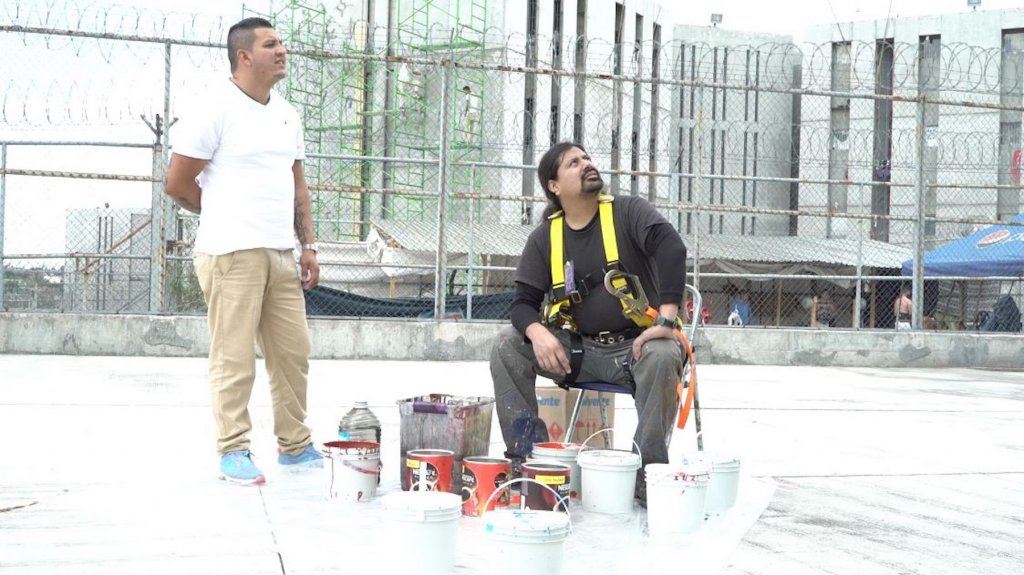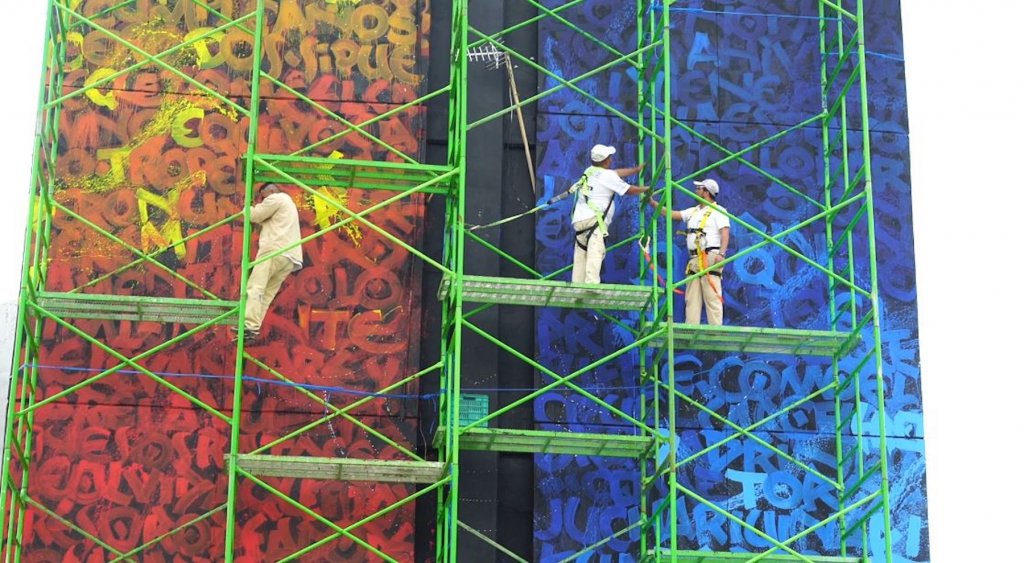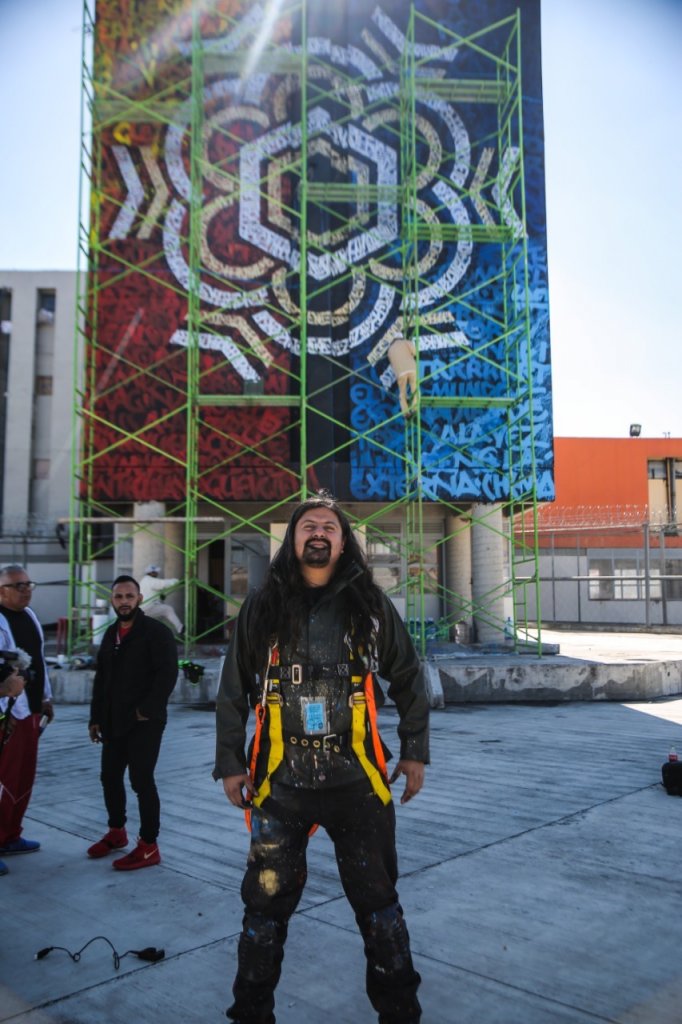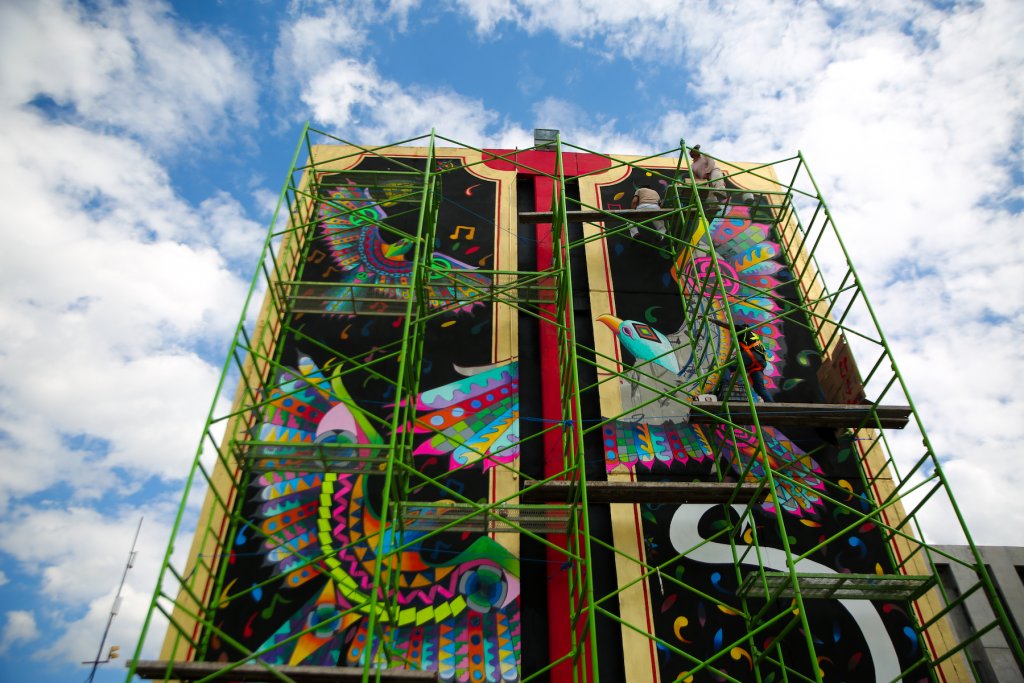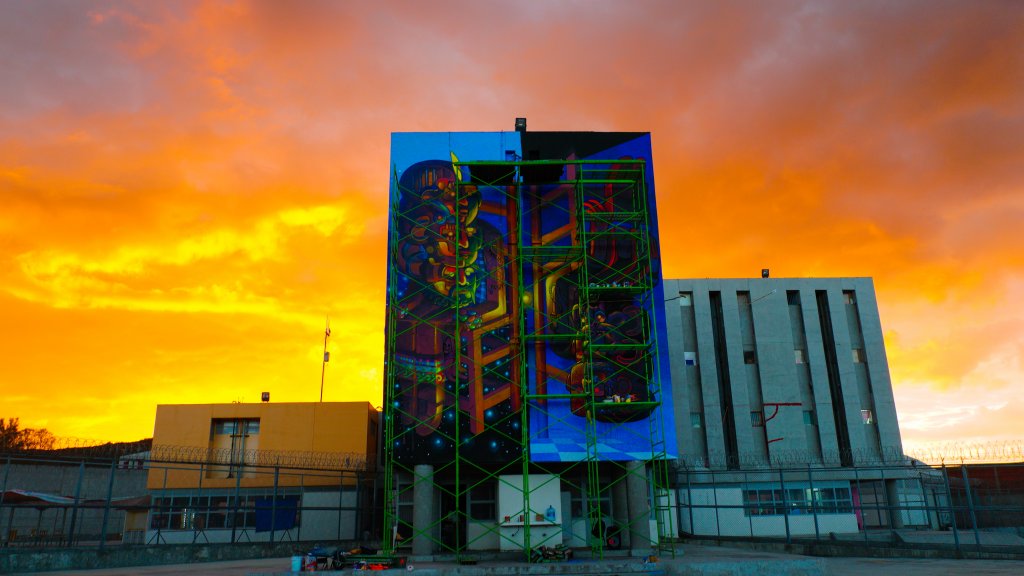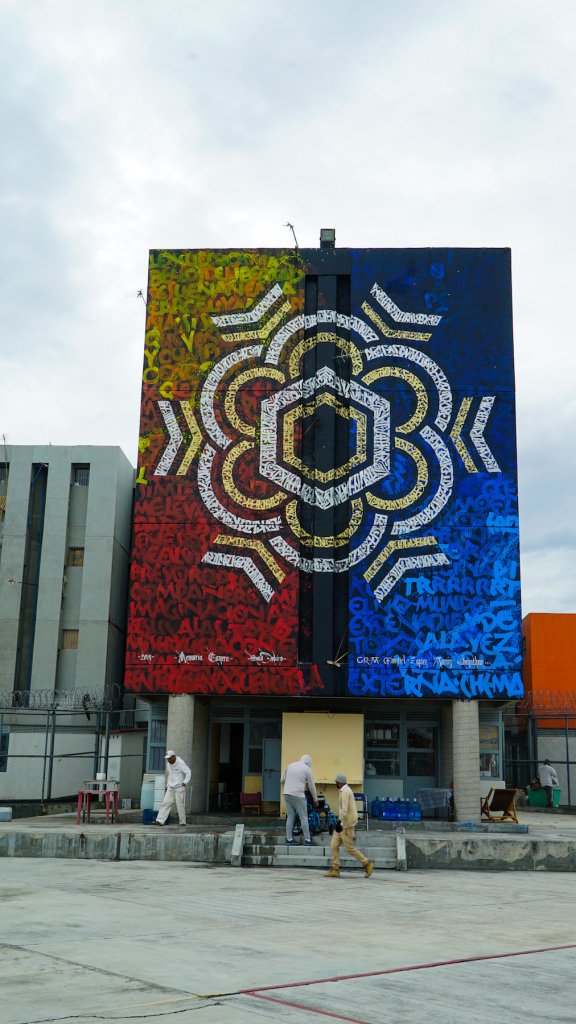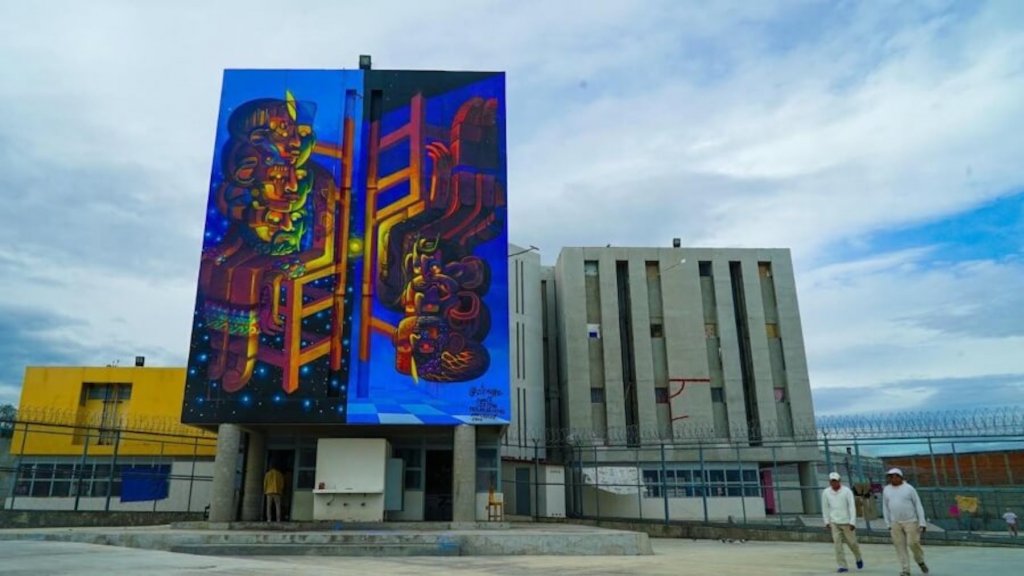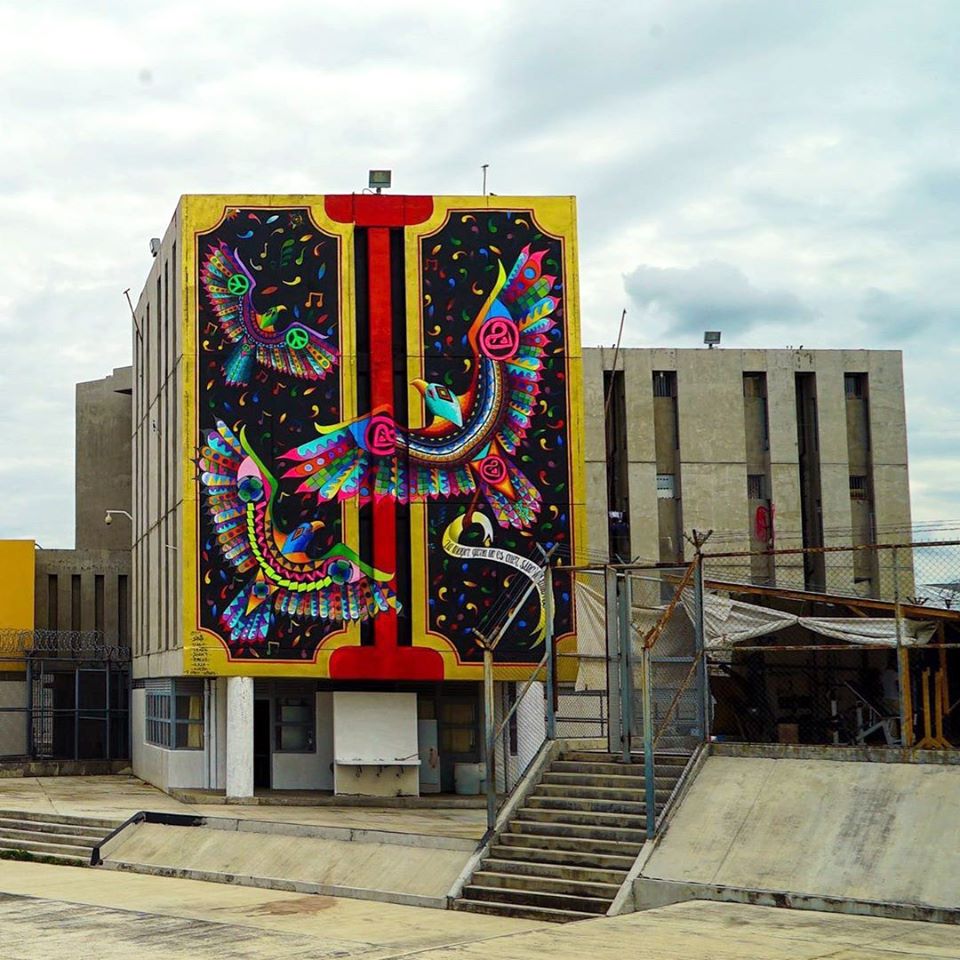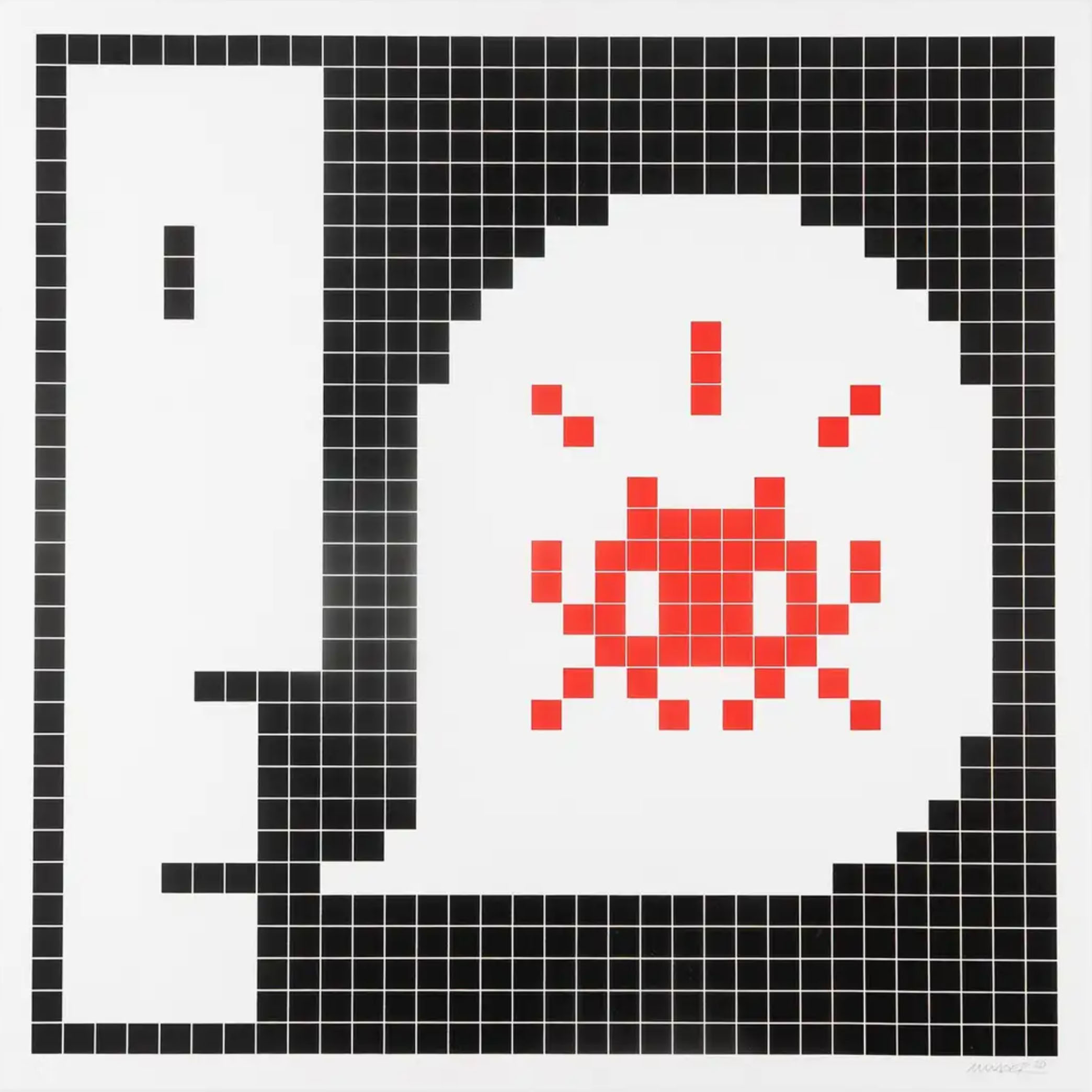Three Mexican street artists, SAID DOKINS, SPAIK and CIX, have spent time in the CE.RE.SO, (Centre of Social Reinsertion) Maximum Security Penitentiary. Not to serve a sentence for a high crime but to bring their talents to the high grey walls of the Penitentiary in Morelia, Michoacán.
CE.RE.SO. High Security for High Impact Crimes of Morelia, Michoacán
We are in the CE.RE.SO. (Centre of Social Reinsertion) of Maximum Security for High Impact Crimes of Morelia, Michoacán. Around us, the landscape is composed by solid inextricable walls, kilometres of bars and wire fences, and gray overwashed uniforms that seem to constrain those who wear them.
The three renowned Mexican artists disrupted the usual dynamics of its inhabitants for some days, cancelling the disciplinary routine, and introducing them to art. They collaborated with the People Deprived of Freedom (PDF) on the production of three murals: “Puedes Volver a Volar” (You Can Fly Again) by Spaik, “Estado Mental” (Mental State) by Cix, and “Memoria Canera” (Memories from Jail) by Said Dokins.
CE.RE.SO. High Security for High Impact Crimes of Morelia, Michoacán CE.RE.SO. High Security for High Impact Crimes of Morelia, Michoacán CE.RE.SO. High Security for High Impact Crimes of Morelia, Michoacán CE.RE.SO. High Security for High Impact Crimes of Morelia, Michoacán
Said Dokins “Memories from Jail”, started by establishing dialogues with the PDF who collaborated with him, gathering phrases, experiences, words used frequently in the prison’s daily life, but also poems, long writings, tales, feelings… This fabric of words, life fragments, memories and shared emotions, was the base on which he traced a geometric figure symbolizing the crossroads we face in life, an unexpected concatenation of experiences that only make sense within the context of surveillance and control. In this piece, humour and irony, desires of freedom and justice, blend with the bitter pills of lockup life.
According to the artist, Said Dokins, “Memories from Jail” is a reflection about identity, memory and the lives lived in jail. The underground culture that emerges in there, from the language, that includes the slang used in the place, the nicknames of the people, until the deepest thoughts about confinement and freedom.
Said Dokins, “Memories from Jail”, CE.RE.SO. High Security for High Impact Crimes of Morelia, Michoacán
CIX mural “Mental State” refers to the psychological aspect of deprivation of liberty, where through a symbolic language evokes feelings, emotions and perceptions about life, condemnation, time and death; his work shows a scene where two characters are in a dreamlike situation, some of the symbols, the artist explains: ‘they represent the desperation to be locked up, the constant thought of death, uncertainty, but also the capacity for change, for transformation and the resemblance we have with our spirit animal, transcending is necessary to overcome, to be reborn.
CIX “Mental State”, CE.RE.SO. High Security for High Impact Crimes of Morelia, Michoacán
In SPAIK’s mural entitled ‘You can fly again,’ the artist used shapes and colours that refer to the Latin American imaginary, reflects on the possibilities of integration into society of people who have been convicted of breaking the criminal law. The eagle, a symbol of national identity, is transformed into a party of colour.
Spaik, “You Can Fly Again.” CE.RE.SO. High Security for High Impact Crimes of Morelia, Michoacán
These new murals teach us to reflect on the importance of culture as a human right and the great potential of artistic practices to transform societies, as it points at the importance of install cultural policies in penitentiary contexts.
